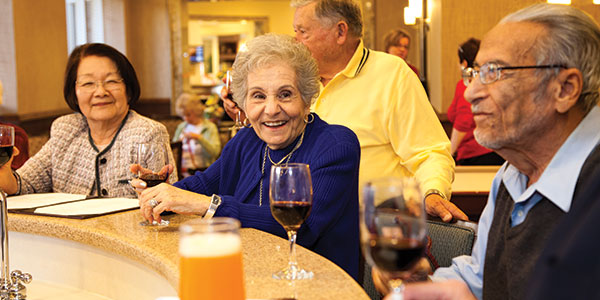Ontario's Action Plan for Seniors - Part 3: Senior-Friendly Communities
Independence. Activity. Good health. Ontario’s Action Plan for Seniors is a firm step toward a better way of life for seniors now, and in the future.
The Ontario Action Plan for Seniors was developed with the ideal in mind that all citizens are entitled to be treated with dignity and respect. That ideal, and the onset of a rapidly increasing 65+ demographic, were the driving factors in the implementation of a new action plan that could improve the quality and equality of retirement living.
In the last part of the series we continue to explore the action plan, which was launched in January 2013, and its’ new long-term initiatives which focus on three pillars of development:
• Part 1: Safety and security
• Part 2: Healthy seniors
• Part 3: Senior-friendly communities
Part 3: Senior-Friendly Communities
The idea behind building senior-friendly communities is to “wrap” an environment of support, comfort, and stability around those who need it. It’s about making it easier for seniors, regardless of language or background, to lead healthy, active and social lives.
Age-Friendly Communities
Support is growing quickly for what the World Health Organization (WHO) is calling “Age-Friendly Communities”. As defined by WHO, age-friendly communities “adapt their structures and services to be accessible to and inclusive of older people with varying needs and capacities.”
To be considered an age-friendly city or community, these dimensions must be adapted to meet the needs of seniors:
• Outdoor spaces and buildings (walkways, roads, parks, etc.)
• Transportation
• Housing
• Social participation
• Respect and social inclusion
• Civic participation and employment
• Communication
• Community support and health services
Ontario’s Action Plan for Seniors will see communities provided with step-by-step guides and tools necessary for developing age-friendly communities. As well, there will be grants offered to assist with developments, and recognition programs to promote communities in support of the age-friendly movement.
Elderly Persons Centres and Active Living Fairs
Ontario currently has over 270 Elderly Persons Centres, these centres provide a range of services including social and recreational programs, health education and support services. The government often funds Active Living Fairs hosted by EPCs across the province. Active Living Fairs provide information for seniors about healthy aging and the importance of active living, as well as promote programs and services seniors are entitled to. Ontario’s Action Plan for Seniors intends to increase the number of Active Living Fairs and expand the network of Elderly Persons Centres across Ontario.
Check out what Active Living Fairs are all about here!
Life Leases
With life lease housing, instead of owning a property, you hold an “interest” in that property. A life lease gives you the right to live in a unit without having to own it. The advantage of choosing a life lease is that units are typically less expensive. As well, because life lease communities are restricted to people of a certain age, seniors are typically able to find others with similar lifestyles, interests and needs. A life lease resource guide is part of Ontario’s Action Plan for Seniors.
For more information on life lease housing, click here.
Better Access to Government Programs
As part of Ontario’s action plan, it was important to be able to deliver information on everything the government has to offer seniors, quickly and easily. There are “one-stop” resources accessible online or by phone.
Phone: 1-888-910-1999
Online: ontario.ca/seniors
Be sure to check out Part 1: Safety and security and Part 2: Healthy seniors for more information on Ontario’s Action Plan for Seniors.
Written by Justin Szostak, Our Kids Media


